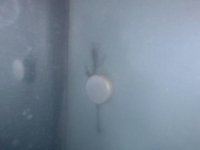After scoping my RV 6 we thought I had a crack. Had lots of eyes on it and everyone agreed it was a crack. I’ve attached a photo from the scope.
After removing the skin and the hinge bracket it was easy to see it wasn’t a crack. It was just dirt. We cleaned and inspected and sure enough there was no crack. We are going to install the repair kit anyway since we already have it opened up. Anyone else find anything similar?
After removing the skin and the hinge bracket it was easy to see it wasn’t a crack. It was just dirt. We cleaned and inspected and sure enough there was no crack. We are going to install the repair kit anyway since we already have it opened up. Anyone else find anything similar?





